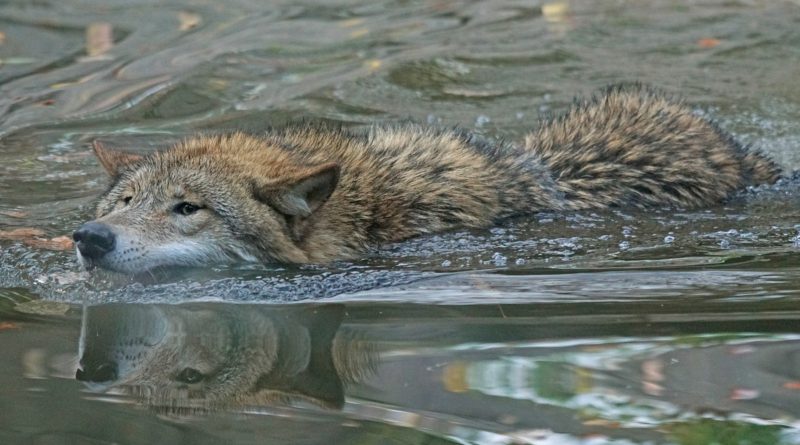The Elusive Sea Wolves Emerge from the Fog
Evolution depends on success within a framework. Usually you see animals adapt to their surroundings over millions of years, millions of failed experiments, and countless subtle increases in fitness by way of small and accidental mutations. But sometimes the hardware stays more or less the same and it’s the software that changes. A culture shift. Humans were traditionally hunter gatherers for hundreds of thousands of years. And then, eureka, agriculture, industry, electricity, technology. Humans themselves are more or less them same, but they adapted to their world with behaviors.
Such is the case with the rare Sea Wolves. Sea Wolves might sound like it’s just a sports team mascot, or a nickname for a military unit, but in this case it actually refers to a real group of wolves which have adapted to life on the coast.
We all know about wolves, pack hunters which make their living running down deer, and chasing caribou and goats. Basically anything that walks about on all fours in wolf territory is in danger of becoming their next meal. But for the British Columbian population of aptly named Sea Wolves, these intrepid canines actually look to the shore to secure dinner.
Surprisingly, most people, even most Canadians, don’t know much about the British Columbia coast. The coast stretches about 250 miles as the raven flies, but, as with any shoreline, the more closely you measure it, the larger that figure becomes. And with deep and jagged glacial fjords carved all up and down the shore, the actual length of coast skyrockets, as does its mystery. Calling it a remote coast would be putting it lightly. Outside of Vancouver, there isn’t much besides a few small towns dotting the length of the coast. It’s a series of dramatic terrain, mountains, fjords, inlets, islands, and nearly all of it uninhabited. So it’s perhaps no wonder that these Sea Wolves went unnoticed in their unique behavior for so long.
Although the subspecies of British Columbia Wolf is genetically distinct from other subspecies, Canis Lupus represents a single species, and the differences within them are almost cultural. Almost. Technically the genetic differences are measurable because of a lack of cross breeding. But this is likely due to the fact that different subspecies have different, for lack of a better word, cultures. Different behaviors that they pass on, different styles of courtship and communication, and, especially in the case of the Sea Wolves, different styles of predation.
And for Sea Wolves, that has a knock on effect that really sets them apart. They don’t just scavenge the coastlines for carrion, they also actively hunt in the water. That’s right, they swim. In fact, they appear to be quite comfortable and competent at treading water and wading for prey. And this is all but unheard of for wolves, but it makes sense. Sea Wolves have found their niche in fishing, and they’re quite good at it. Which is good for them, because there are other British Columbia wolves who haven’t adopted the practice, and who roam within howling distance of the packs of Sea Wolves. Adapting to a new source of food means much less competition for our Sea Wolves, and for their nearby relatives who don’t like to get their paws wet.
It just goes to show you that animals are often capable of adapting in ways similar to humans, that is, not just physically over millions of years, but culturally over mere generations. Animals are often more intelligent than people give them credit for, and the case of the Sea Wolves is a success story that proves it.
